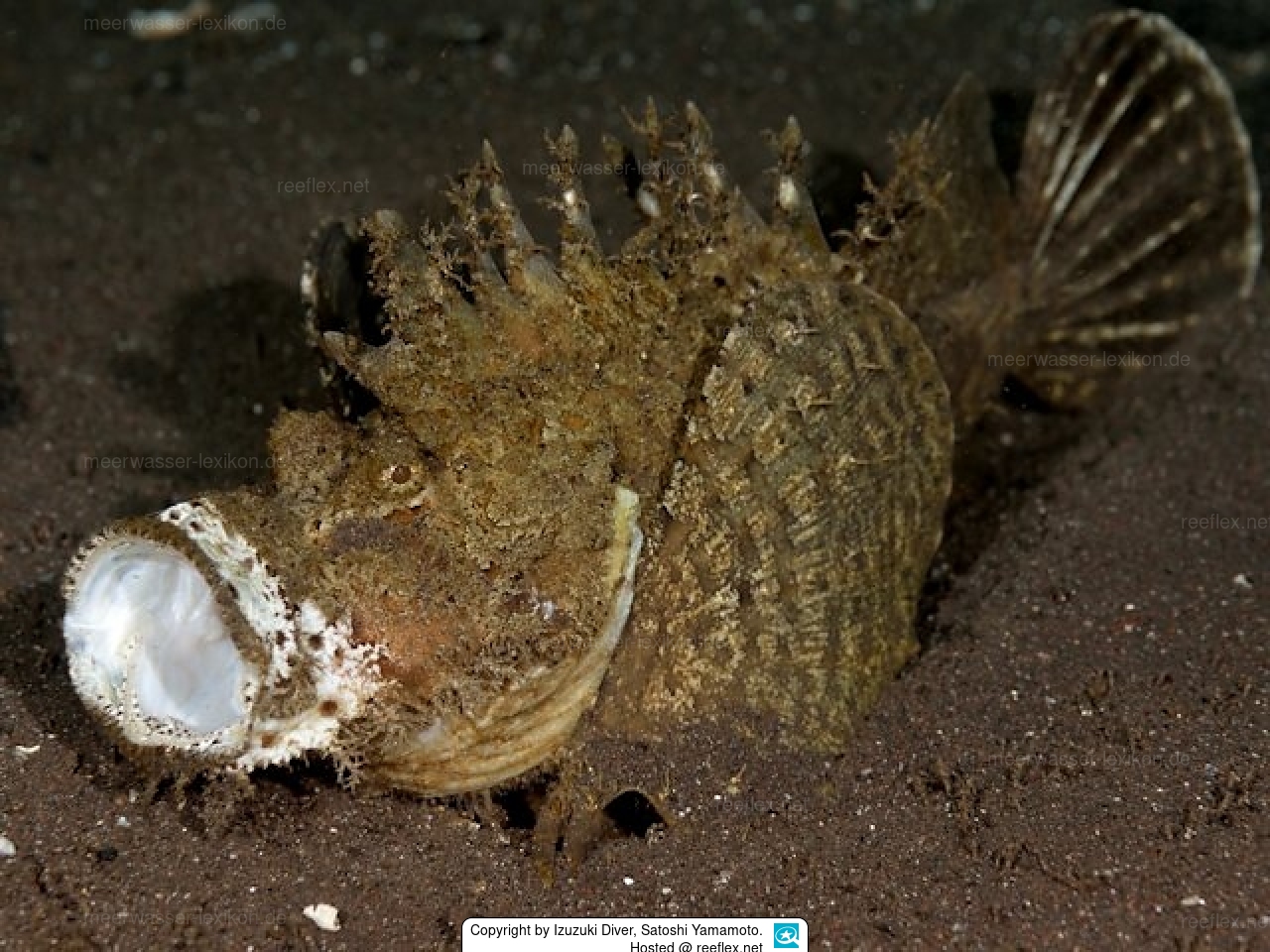Info
Particular caution should be exercised with all poisonous animals, whether they are cone snails, box jellyfish, Portuguese man-of-war, or, in this case, stonefish.
Stonefish are usually very well camouflaged against their surroundings thanks to their body color (exceptions prove the rule), so it is always worth taking a critical look at all marine animals before approaching them.
Inimicus japonicus is a fish-eating predator that attacks from ambush, well camouflaged. It is nocturnal and during the day usually lies partially buried on the seabed or on a coral head.
In Japan, this stonefish is bred commercially for aquariums, while in China it is used in Chinese medicine.
Looking at the main photo from Izuzuki Divers, it quickly becomes clear that this “big mouth” swallows almost anything that carelessly approaches it.
Synonyms:
Inimicus aurantiacus Jordan & Starks · uncertain > unassessed
Inimicus japonica (Cuvier, 1829) · unaccepted (misspelling)
Pelor aurantiacum Temminck & Schlegel, 1843 · unaccepted
Pelor japonicum Cuvier, 1829 · unaccepted







 Izuzuki Diver, Satoshi Yamamoto, Japan
Izuzuki Diver, Satoshi Yamamoto, Japan









